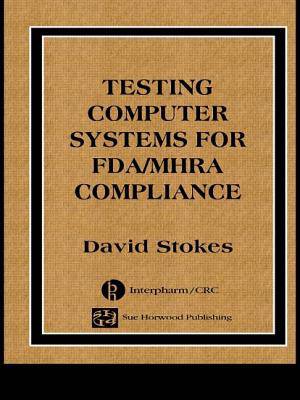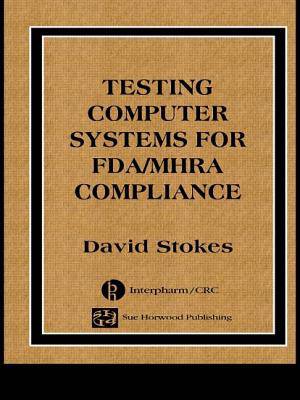
- Afhalen na 1 uur in een winkel met voorraad
- Gratis thuislevering in België vanaf € 30
- Ruim aanbod met 7 miljoen producten
- Afhalen na 1 uur in een winkel met voorraad
- Gratis thuislevering in België vanaf € 30
- Ruim aanbod met 7 miljoen producten
Zoeken
Omschrijving
There is no substitute for extensive testing when it comes to IT systems. Recognition that problems are easier and cheaper to fix before the system is in use (rather than after), has turned testing into a cost-effective tool. However, when developing computer systems for pharmaceuticals manufacturing, testing to meet regulatory requirements adds an additional layer of complexity. Testing Computers Systems for FDA/MHRA Compliance focuses on software module, software integration, hardware, and system acceptance testing. Reflecting the renewed emphasis of the FDA and other global regulatory agencies towards systematic inspections and risk-based validation with an underlying scientific rationale, this guide focuses on current best practices in computer systems testing in the regulatory environment. David Stokes demonstrates how the principles detailed in the GAMP 4 Guide can be used to define a pragmatic approach to testing. He includes techniques for testing large Internet-based systems for compliance with the stringent requirements of regulations such as 21CFR Part 11, and clarifies the relationship and responsibilities of the system "user" and "supplier". The author also delineates where testing starts in the project lifecycle, who performs what testing, where the lines of responsibility start and end, and the differences in the terminology used in the healthcare and general IT sectors. A checklist of questions to be used when developing System Test Specification(s), and templates for documenting typical system test results, round out the features that make this book a practical guide for all those involved in the development and implementation of IT systems for the pharmaceutical and related healthcare manufacturing industries. Senior managers, team project leaders, project team members, and industry trainees, will all benefit from this clear and practical guide.
Specificaties
Betrokkenen
- Auteur(s):
- Uitgeverij:
Inhoud
- Aantal bladzijden:
- 136
- Taal:
- Engels
- Reeks:
Eigenschappen
- Productcode (EAN):
- 9780849321634
- Verschijningsdatum:
- 25/11/2003
- Uitvoering:
- Hardcover
- Formaat:
- Genaaid
- Afmetingen:
- 189 mm x 248 mm
- Gewicht:
- 399 g

Alleen bij Standaard Boekhandel
+ 610 punten op je klantenkaart van Standaard Boekhandel
Beoordelingen
We publiceren alleen reviews die voldoen aan de voorwaarden voor reviews. Bekijk onze voorwaarden voor reviews.











